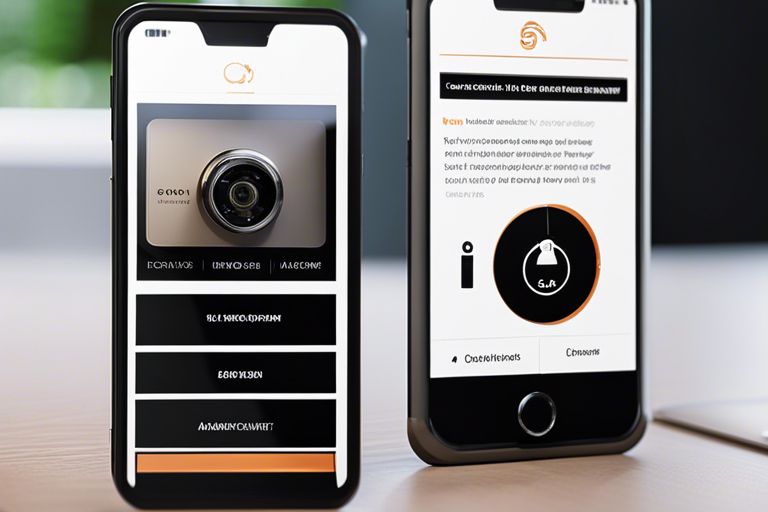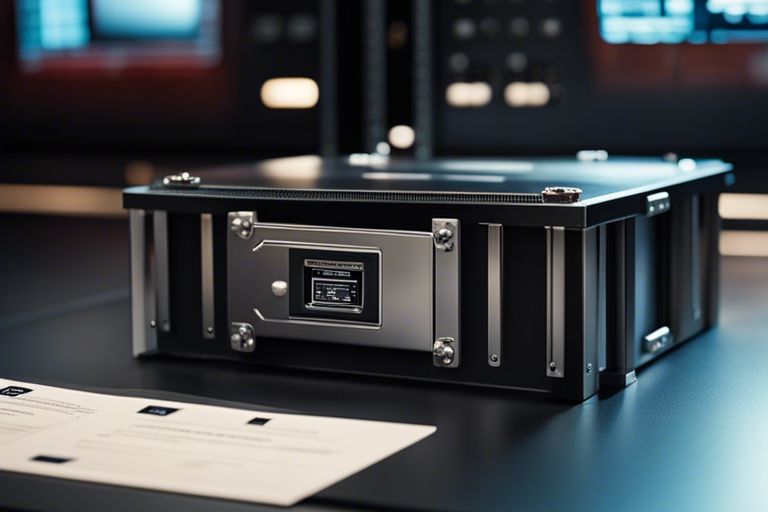Game-changer technology in home security, biometric authentication is revolutionizing the way we protect our homes. By using unique physical characteristics like fingerprints, facial recognition, or voice patterns, biometric systems provide unparalleled security that is nearly impossible to replicate or hack. In this blog post, we will explore the reasons behind the surge in popularity of biometric authentication systems and how they are reshaping the landscape of home security.
Key Takeaways:
- Enhanced Security: Biometric authentication offers a high level of security as it verifies a person’s unique physical characteristics such as fingerprints or facial recognition.
- Convenience: Using biometric authentication in home security eliminates the need to remember passwords or carry keys, providing convenience for homeowners.
- Difficult to Duplicate: Biometric attributes are difficult to duplicate, making it a secure form of authentication that reduces the risk of unauthorized access to homes.
- Personalization: Biometric systems can be personalized to individual users, allowing for tailored security measures based on specific needs and preferences.
- Integration with Smart Homes: Biometric authentication seamlessly integrates with smart home devices, enhancing overall security and creating a more connected home environment.
The Mechanics of Biometric Authentication
While the concept of biometric authentication may seem futuristic, its mechanics are quite straightforward. Biometric authentication uses unique physical characteristics or behavioral traits to verify a person’s identity. This verification process is highly secure, as these biometric features are difficult to replicate or steal.
Fingerprint Recognition
Authentication through fingerprint recognition involves scanning and analyzing unique patterns present in an individual’s fingerprints. These patterns, including ridges, swirls, and minutiae points, are then converted into a digital template for comparison and verification. This method is widely used in smartphones, laptops, and home security systems for its accuracy and convenience.
When a user places their finger on a sensor, the system captures the fingerprint image and matches it with the stored template. If the patterns match, access is granted. Fingerprint recognition is not only fast and reliable but also eliminates the need to remember complex passwords or carry physical keys.
Facial Recognition
On the other hand, facial recognition technology uses unique facial features, such as the distance between eyes, nose, and mouth, to identify an individual. In this process, a camera captures the facial data, which is then analyzed and compared against a database of registered faces.
Facial recognition technology has advanced significantly in recent years, offering higher accuracy rates and faster processing speeds. This technology is now being integrated into various security systems, from smartphones to surveillance cameras, enhancing overall security measures.
Iris Scanning
Authentication through iris scanning involves using the unique patterns in an individual’s iris to verify their identity. Iris patterns are highly complex and can provide a high level of accuracy in identification. This method is considered one of the most secure forms of biometric authentication.
When a user looks into a specialized camera, the system captures the intricate patterns in their iris and compares them with the stored template. Iris scanning is not only secure but also fast and non-intrusive, making it suitable for various applications where security is paramount.
Voice Recognition
Voice recognition technology analyzes an individual’s unique vocal patterns, pitch, and rhythm to verify their identity. By capturing and comparing these voice characteristics, the system can accurately authenticate the user. This technology is increasingly being used in call centers, smart home devices, and personal assistants for secure access.
To further enhance security, voice recognition systems can incorporate anti-spoofing measures to detect recordings or mimicry attempts. As voice biometrics continue to evolve, they offer a convenient and reliable method for user authentication in various scenarios.
Advantages of Biometric Authentication in Home Security
Increased Security
To address the growing concerns of traditional security systems being compromised, biometric authentication offers a robust solution for home security. With biometric authentication, individuals can utilize unique physiological features such as fingerprints, facial recognition, or iris scans to gain access to their homes. These biometric identifiers are extremely difficult to replicate, providing a higher level of security compared to traditional methods like keys or passwords.
Furthermore, biometric authentication ensures that only authorized individuals can enter a home, reducing the risk of unauthorized access. Intruders or burglars are less likely to bypass biometric security measures, making it an effective deterrent against potential threats.
User Convenience
Authentication using biometrics offers unparalleled convenience for homeowners. With biometric systems, there is no need to remember passwords, carry keys, or worry about losing access cards. Users can simply use their unique physiological traits for seamless and quick entry into their homes. This eliminates the hassle of fumbling for keys or forgetting passwords, providing a hassle-free user experience.
It is worth noting that biometric authentication can be integrated with smart home technologies, allowing homeowners to control various aspects of their home environment with a simple scan of their biometric data. From adjusting lighting to setting the thermostat, biometric authentication adds a layer of convenience to the overall home security system.
Non-Transferability
For enhanced security, biometric authentication systems offer non-transferable features that traditional security measures lack. Biometric identifiers are unique to each individual and cannot be duplicated or shared, ensuring that only the authorized user can access the protected area. This eliminates the risk of unauthorized users gaining entry through stolen keys or passwords.
For instance, even in the event of a lost or stolen keycard, a biometric system remains uncompromised as it relies on the user’s unique physiological traits. This non-transferability feature adds an extra layer of protection to home security, making it a reliable choice for safeguarding your living space.
Integration and Smart Home Ecosystems
Compatibility with Smart Home Devices
The integration of biometric authentication with smart home devices has revolutionized the way we secure our homes. By using biometrics such as fingerprint or facial recognition, homeowners can now easily access their properties without fumbling for keys or remembering complex passwords. This seamless integration ensures that only authorized individuals can enter the premises, adding an extra layer of security and peace of mind.
Furthermore, biometric authentication can be interconnected with other smart home devices such as security cameras, smart locks, and alarm systems. This interconnected ecosystem allows for a holistic approach to home security, where each device works in harmony to provide a comprehensive and reliable protection solution for homeowners.
Future Developments in Home Automation
As technology advances, the future of biometric authentication in home security looks promising. Innovations such as voice recognition, iris scanning, and even gait analysis are being explored to enhance the security and convenience of home automation systems. These developments aim to make the user experience more intuitive and seamless, further solidifying biometric authentication as a game-changer in the realm of home security.
An additional benefit of future developments in home automation is the potential for increased customization and personalization. Homeowners may soon be able to tailor their security settings based on individual preferences, creating a truly bespoke and tailored security system that meets their specific needs and requirements.
Automation in home security continues to evolve, incorporating advanced technologies and innovative features that not only enhance the level of protection but also simplify the user experience. With these ongoing developments, the integration of biometric authentication with smart home devices is set to transform the way we secure our homes, making it a pivotal aspect of modern home security systems.
Challenges and Considerations
Privacy Concerns
Any technology that involves biometric data collection raises valid concerns about privacy. Users may worry about how their biometric information is stored, who has access to it, and the potential risks of it being hacked or misused. With home security systems using biometric authentication, there is a need for strict protocols to ensure the protection of sensitive data. Additionally, some individuals may feel uncomfortable with the idea of their unique biological traits being used as a means of identification.
Furthermore, there are ethical considerations to address regarding the use of biometric data in home security. Questions about consent, transparency, and the long-term implications of biometric authentication need to be thoroughly discussed and regulated. As biometric technology continues to advance and become more prevalent in everyday life, finding a balance between convenience and safeguarding individual privacy will be crucial.
Technical Limitations
Any reliance on technology comes with the risk of technical limitations, and biometric authentication is no exception. Factors such as accuracy, speed, and compatibility with different devices can impact the effectiveness of biometric security systems. For instance, environmental factors like lighting conditions or changes in an individual’s physical appearance can affect the accuracy of biometric recognition.
Considerations must also be made for individuals with physical disabilities or conditions that may affect the reliability of biometric authentication. It is essential for developers and manufacturers to address these technical limitations to ensure that biometric authentication remains a viable and secure option for home security.
Considerations such as continuous advancements in biometric technology, the need for robust security measures, and the ongoing development of standards and regulations are vital in addressing the technical limitations associated with biometric authentication. By staying informed and proactive in addressing these challenges, the potential of biometric authentication as a game-changer in home security can be maximized while mitigating risks.
Conclusion
Ultimately, biometric authentication is revolutionizing home security by providing a highly secure and convenient way to protect our homes. With the ability to uniquely identify individuals based on their physical traits, such as fingerprints or facial features, biometric technology offers a level of security unmatched by traditional methods like keys or passwords. As technology continues to advance, biometric authentication is becoming more affordable and accessible, making it a game-changer in the realm of home security. Homeowners can now enjoy peace of mind knowing that their properties are protected by cutting-edge biometric systems that effectively deter unauthorized access.
FAQ
Q: What is biometric authentication in home security?
A: Biometric authentication in home security is a technology that uses measurable biological characteristics to verify a person’s identity, such as fingerprints, facial recognition, or voice recognition.
Q: How does biometric authentication enhance home security?
A: Biometric authentication enhances home security by providing a more secure and convenient way to access your home compared to traditional methods like keys or passwords. Biometric data is unique to each individual and difficult to replicate, making it a highly reliable form of identification.
Q: What are the benefits of using biometric authentication in home security?
A: The benefits of using biometric authentication in home security include increased security as biometric data is difficult to forge or steal, convenience as there is no need to remember keys or codes, and flexibility as multiple family members can have their unique biometric data stored for access.
Q: Is biometric authentication safe to use in home security systems?
A: Yes, biometric authentication is considered safe to use in home security systems. Biometric data is encrypted and stored securely, reducing the risk of unauthorized access. Additionally, biometric identifiers are unique to each individual, making it challenging for intruders to bypass the system.
Q: How is biometric authentication becoming a game-changer in home security?
A: Biometric authentication is revolutionizing home security by providing a higher level of protection against unauthorized access, offering a more convenient and user-friendly experience for homeowners, and paving the way for more advanced and integrated smart home systems that prioritize safety and ease of use.






